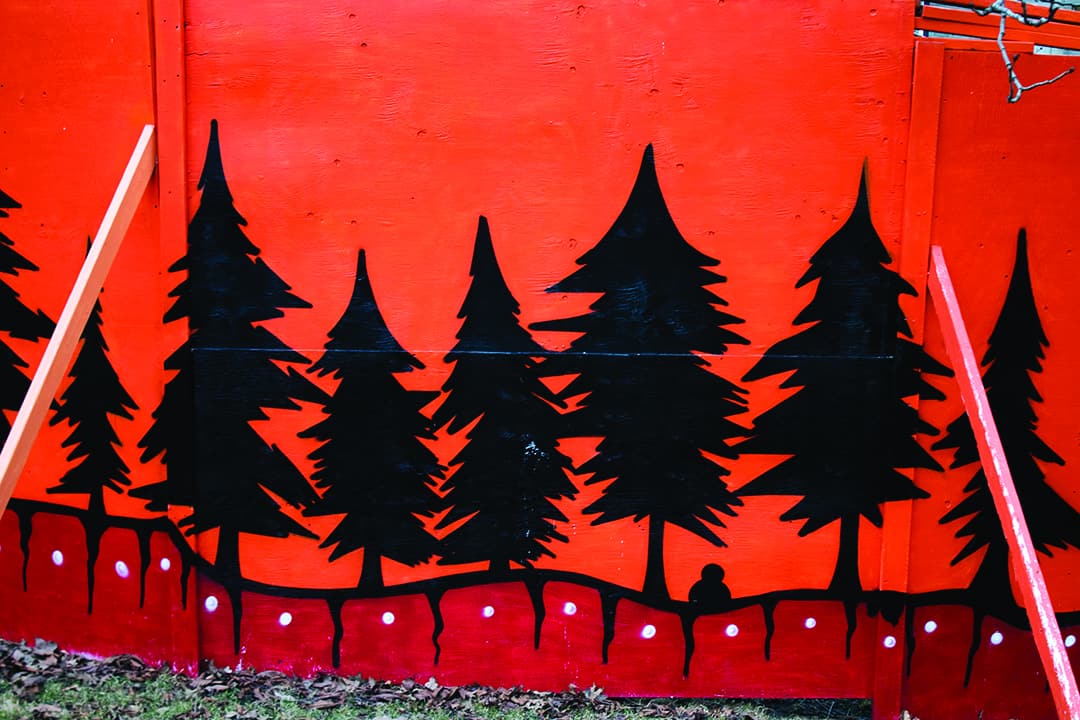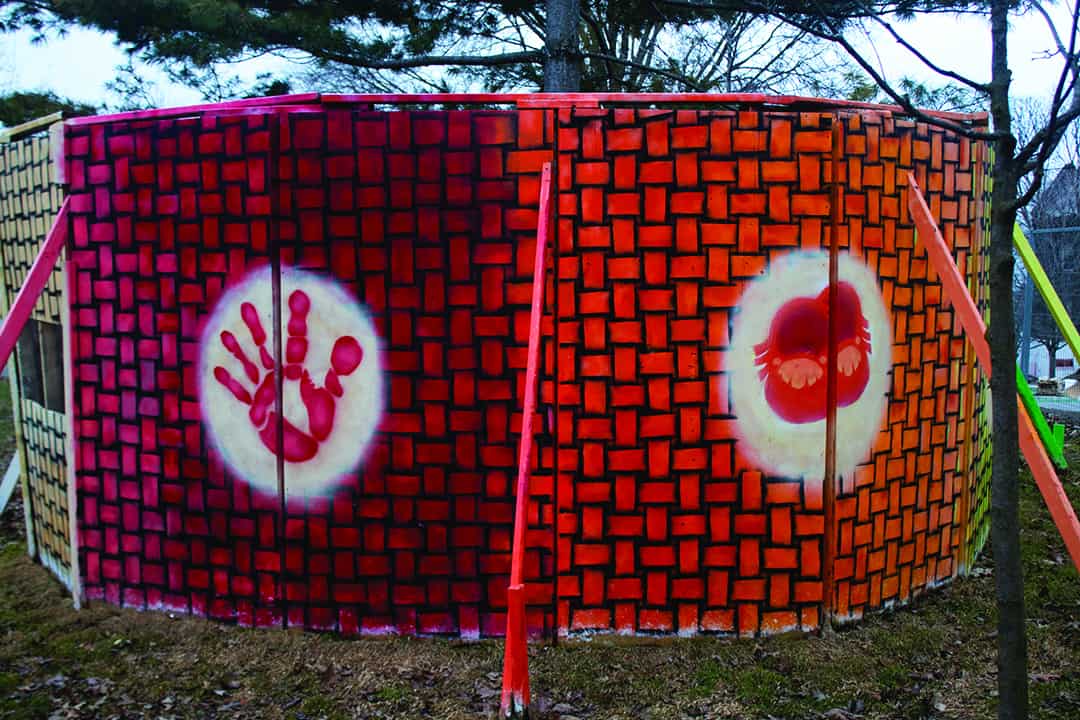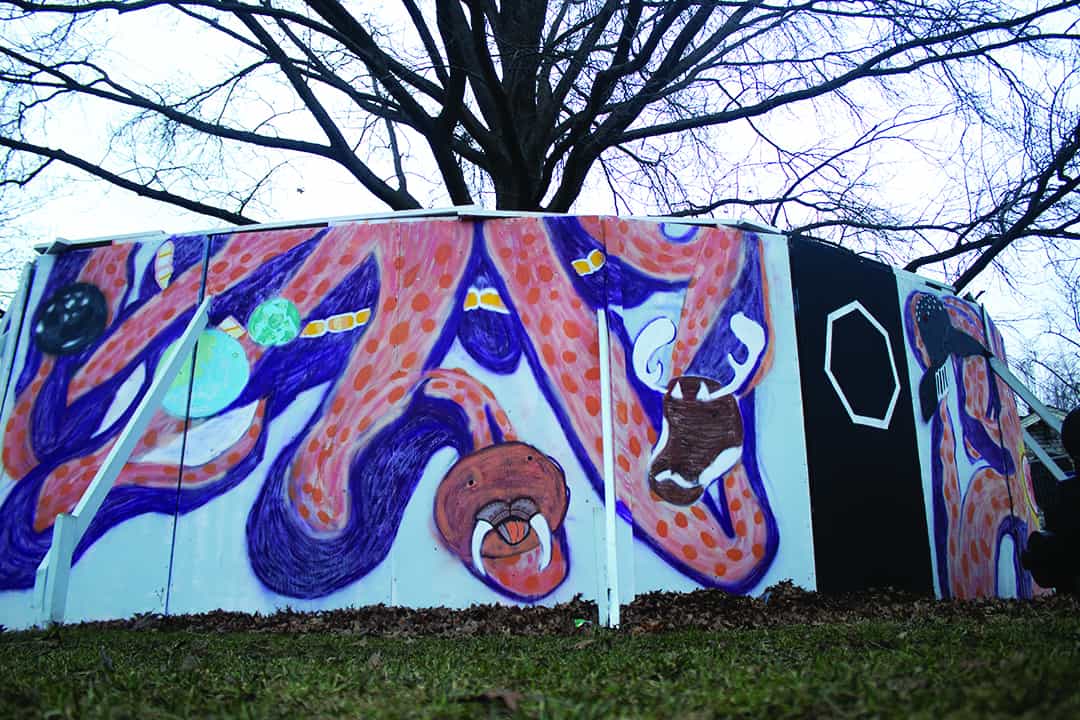Content warning: This article mentions the abuses committed as a part of the residential school system.
Murals completed by eight Indigenous artists are currently on display on the Hart House green to create a central space on campus for Indigenous voices. These artworks aim to bring greater awareness to issues faced by Indigenous communities, something that the national Truth and Reconciliation Commission and the one at U of T recommended.
The Truth and Reconciliation Commission of Canada (TRC), which was active from 2007 until 2015, sought to inform Canadians about what truly happened in residential schools. It spoke to survivors, people close to survivors, and anyone else affected by the residential school system, to record and share their truth.
In direct response to the TRC’s final report, which was released in 2015, the University of Toronto’s Truth and Reconciliation Steering Committee released its own final report in 2017, focusing its calls to action in six areas. One of these areas is Indigenous spaces.
The Tree Protection Zone established on the Hart House green responds to the call to create space on campus dedicated to Indigenous experiences. The Landmark Project currently underway at front campus was an opportunity to create an Indigenous space central to campus.
For the Landmark Project, the trees in the Hart House commons were surrounded by wooden planks to protect them from ongoing construction. Eight Indigenous artists — Shuvinai Ashoona, Susan Blight, Carrie Hill, Christi Belcourt, Isaac Murdoch, Taqralik Partridge, Nils Ailo Utsi, and Que Rock — were invited to use the space created by the wooden planks to express themselves and their cultures through art. According to Hart House’s website, the works are “considering the preservation of life, water, and kin and how each is inextricably linked to the protection of trees.”
The Tree Protection Zone is temporary, but there are plans to create a permanent space dedicated to Indigenous experiences in the same space. The Indigenous Landscape project will create a permanent space to honor Indigenous communities and for non-Indigenous students and university community members to learn. It will include space for gatherings and an Indigenous garden.
The space will include references to fire and water as well as Taddle Creek, a creek with cultural importance to Indigenous groups, including the Huron-Wendat, the Seneca, and the Mississaugas of the Credit First Nation. The Taddle Creek once flowed through U of T, but was partially buried by the city in 1886.








Indigenous people in need of support can call:
- Indigenous student services at U of T’s First Nations House at 416-978-8227, or email at [email protected],
- Indigenous student support specialist at UTM’s Indigenous Centre at 905-828-5437,
- Anishanawbe Health Toronto at 416-360-0486,
- Za-geh-do-win Information Clearinghouse at 1-800-669-2538,
- Indian Residential School Crisis Line at 1-866-925-4419 (available 24 hours a day),
- Hope for Wellness Helpline at 1-855-242-3310,
- Talk4Healing Help Line at 1-855-554-4325.


